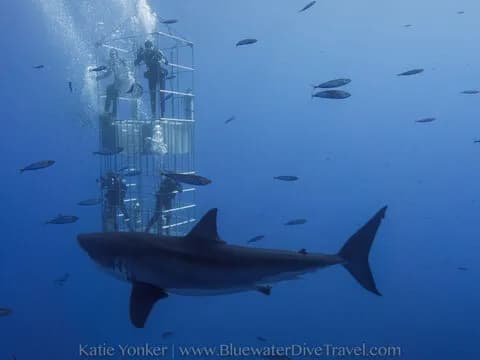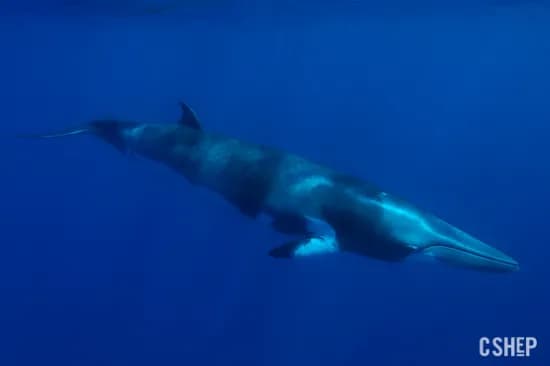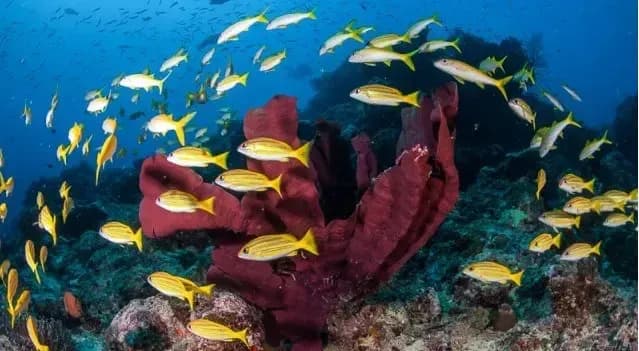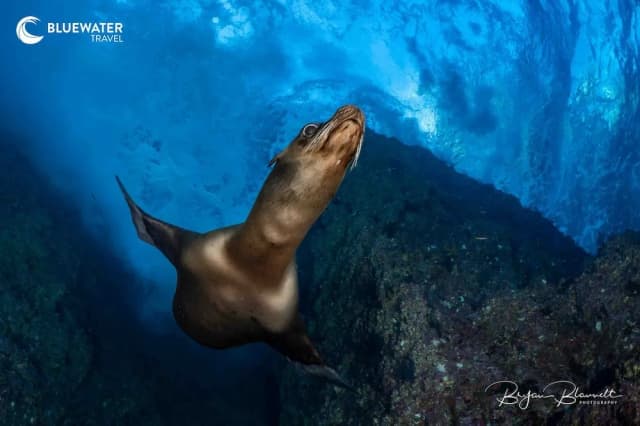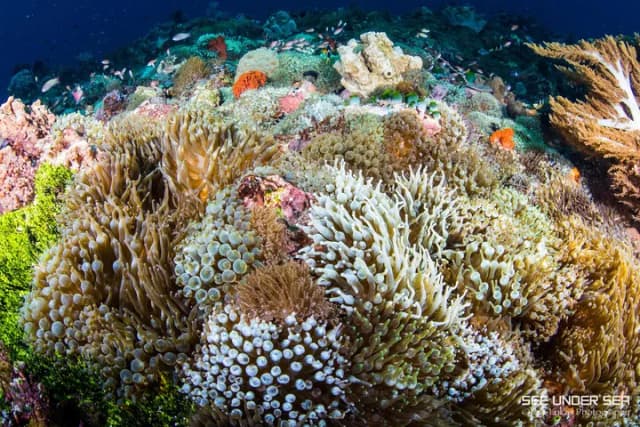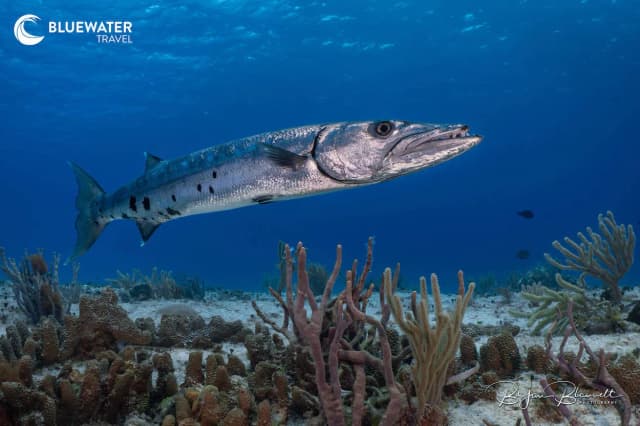The World's Best Places to Shark Cage Dive
For some divers, the thought of encountering sharks underwater is thrilling yet terrifying, and even the most seasoned divers can experience a sense of vulnerability when sharing a dive with one of the oceans most prominent predators. Whilst we all appreciate the value of these awesome fish, in certain conditions, getting in the water with them is just not sensibleand thats where shark cage diving comes in.
But what is shark cage diving, and how does it work? Shark cage diving is done underwater inside a metal cage that provides a safe environment for divers (and often non-divers, too) to observe and photograph sharks with minimal risk. The metal cage is most commonly used when diving with great white sharks. In some destinations, shark baiting is used to attract sharks around the cages. If youre unsure about whether cage diving with sharks is for you, read Debbie Wallaces fascinating account on Caged vs Open Water Shark Diving.
For those excited about cage diving with sharks, we have pulled together a list of the worlds best places to experience these awe-inspiring creatures from the safety of a cage. And for photographers keen to expand their repertoire, have a look at these great cage diving photo tips.
Neptune Islands, Australia
Great White Shark Cage Diving
The Neptune Islands lie in South Australias Spencer Gulf, a three-hour boat journey from Port Lincoln to the west of Adelaide. The islands form a protected Conservation Park and are the only place in Australia where divers can get face-to-face with great whites. The winter months of May through to October are the best time to witness these migratory sharks as they prey on juvenile seal pups venturing into the water for the first time.


Cage diving is possible here from both day-trip and liveaboard boats, and one outfit even offers the unique option of ocean floor shark cage diving. The sharks tend to be very relaxed gliding along the sea bed, more concerned about whats going on above than investigating the cage. Australia is the original home of shark cage diving and provides an authentic experience observing these awesome creatures in their natural habitat.
For an unparalleled great white shark diving adventure, consider Rodney Fox Shark Expeditions, renowned for their expertise and conservation efforts."
Australia is also home to some of the best shipwrecks to scuba dive.
Practical Information
Diving Season: Year-round, but the best shark sightings are from May to October.
Water Temperature: As low as 64F (18C) over the winter.
Difficulty: Suitable for all levels, including non-divers.
Activities: Coastal hiking and nature walks, fishing, yachting, and great seafood restaurants.
Nearest Airport: Adelaide Airport (ADL).
Explore Rodney Fox Shark Expeditions Neptune Island trips.
View the availability of some of the best liveaboards in Australia and book online at the best price!
Western Cape, South Africa
Cage Diving With Bronze Whaler And Great White Sharks
On South Africas southwestern tip, the 200-mile stretch of coastline running between Gansbaai and Mossel Bay is known historically as the white shark capital of the world. Only five miles offshore from Gansbaai, Dyer Island is home to around 60,000 resident Cape fur seals, attracting what was once the densest population of great whites anywhere on the planet. Shark cage diving in the infamous Shark Alley is a huge business, even though since 2017 great whites have all but disappeared from these coastal waters. Fatal encounters with orcas have pushed the great white population into deeper water, and it is now bronze whaler sharks that are most commonly sighted. Operators run trips from Gansbaai, nearby False Bay, and Mossel Bay for divers, snorkelers, or tourists keen to spectate from the boat.


The popularity and accessibility of shark cage diving in the Western Cape area make for a less exclusive experience compared to some other destinations. However, day trips offer more flexibility and come at a reduced cost, still providing an exhilarating and memorable experience.
Practical Information
Diving Season: Year-round, but best sightings from May to October.
Water Temperature: Coldest in July at 57F (14C), warming to 73F (23C) by the end of January.
Difficulty: Suitable for all levels, including non-divers.
Non-diving Activities: Whale and shark watching, wine and heritage tours, safari.
Nearest Airport: Cape Town International Airport (CPT).
Read about Bluewater Travel Advisor Tim Yeo's group trip to South Africa.
Farallon Islands, USA
Great White Shark Cage Diving
Just 29 miles from San Franciscos Golden Gate Bridge, the Farallon Islands are a National Marine Sanctuary home to five species of seals and sea lions. Between late July and January each year, migrating great whites stop at the islands on their way to the mid-Pacific to feast on the local elephant seal population. Estimates suggest 30 to 100 sharks visit the Farallon Islands each season, including some of the largest specimens ever recorded.
There is a narrow window to dive with the Farallon sharks, with most operators running day trips during the peak hunting season from late September to the end of November. Unlike other locations, operators here use mammal-shaped decoys instead of chum to attract sharks, minimizing environmental impact and avoiding interference with normal feeding habits.
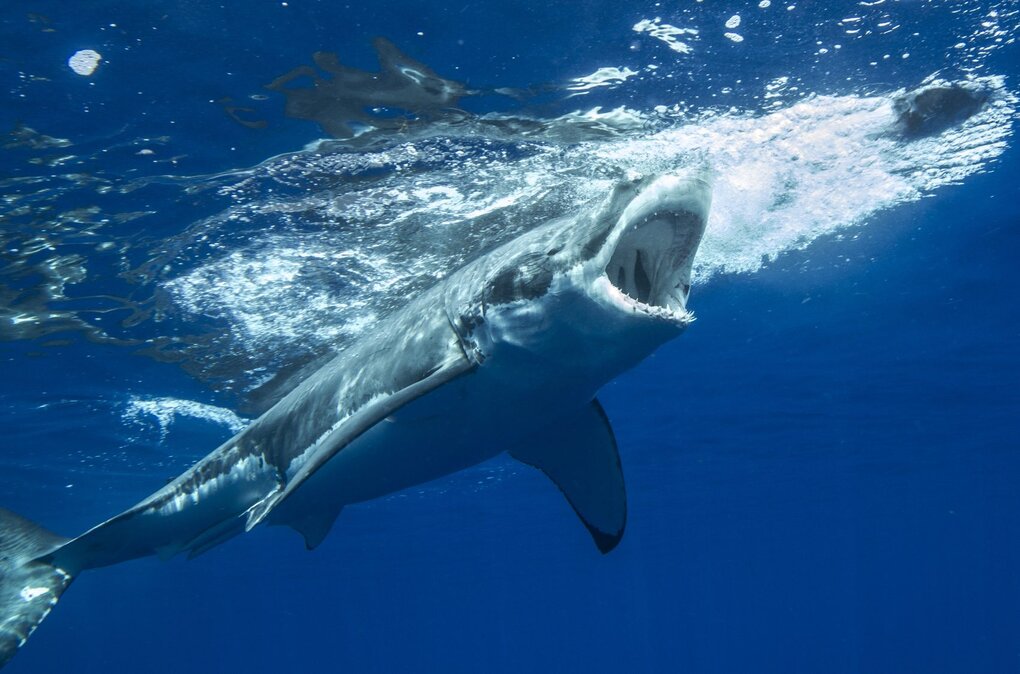

The shark cage diving at Farallon is carried out sustainably and ethically, allowing these magnificent creatures to thrive undisturbed while supporting vital research and raising public awareness.
Practical Information
Diving Season: Late September through the end of November.
Water Temperature: 54-57F (12-14C).
Difficulty: Suitable for all levels, including non-divers.
Non-diving Activities: There are lots of places to visit in San Francisco, a city full of attractions, museums, and tours.
Nearest Airport: San Francisco International Airport (SFO).
Oahu, USA
Cage Diving With Galapagos And Sandbar Sharks
The third-largest of the Hawaiian Islands, Oahu offers several operators running shark cage diving trips off the islands North Shore. Hawaii is home to 40 of the worlds 140 shark species, and participants may spot Galapagos, sandbar, and tiger sharks, along with the occasional blue, silky, or hammerhead shark.
The best encounters happen three miles offshore, where the Pacific reaches depths of 500 feet. These trips focus on education and conservation, with participants snorkeling at the surface, requiring no scuba gear. Sharks arent baited heretheir natural abundance ensures daily sightings. Warm waters and calm conditions make this one of the most comfortable shark diving experiences.


Practical Information
Diving Season: Year-round, with Galapagos sharks most common in the spring and early summer.
Water Temperature: 76-81F (24-27C).
Difficulty: Suitable for all levels, including non-divers.
Non-diving Activities: Visit the iconic Waikiki Beach or take a historic tour around Pearl Harbour. Go for a hike around Diamond Head Crater, or explore a wildlife or coffee plantation tour.
Nearest Airport: Daniel K. Inouye International Airport (HNL).
Find out about scuba diving Hawaii.
Isla Guadalupe, Mexico
Great White Shark Cage Diving
Isla Guadalupe is undoubtedly the best place in the world to dive with great white sharks. Located 150 miles off the Baja California Peninsula, this uninhabited volcanic island is only accessible via liveaboard, with many boats offering cage diving experiences. Trips depart from San Diego, USA, or Ensenada, Mexico, making for a 5-6 day adventure with 3 full days of thrilling shark cage diving.
Note: Shark cage diving in Guadalupe was closed indefinitely in 2022.



The great white season runs from July to November. Early in the season, many young males arrive, ready to mate. Larger males appear from late September, with the biggest females arriving in October as the weather begins to change, making it an ideal time to visit.

Guadalupe is also the only place where divers can cage dive using a SPOC (Self Propelled Ocean Cage). This small submersible carries divers alongside the sharks at a cruising speed of 5 knots, allowing for some amazing photo opportunities.
Cage diving with great whites in Guadalupe offers unrivaled insight into the species' feeding and mating behaviors, providing valuable research and a greater understanding of this iconic creature.
You can read more about photographing great whites in Guadalupe in George Probsts shark photo tutorial series.
Practical Information
Diving Season: July to November.
Water Temperature: 70-75F (21-24C).
Difficulty: Suitable for all levels, including non-divers.
Non-diving Activities: Liveaboard-only activities.
Nearest Airport: San Diego International Airport (SAN).
Read about the Pelagic Fleet's luxury liveaboard trips to Guadalupe Island.
View the availability of some of the best liveaboards in Isla Guadalupe and book online at the best price!
Frequently Asked Questions About Shark Cage Diving
Don't let misinformation in popular film and television guide your decision to embark on a shark cage diving adventure. Read our FAQ below, and if you still have questions, contact the experts at Bluewater Travel for more information from travel advisors with firsthand experience cage diving with sharks.
Do I Need to Be Scuba Certified to Go Shark Cage Diving?
Many tours have surface cages available, so you do not need to be scuba certified. However, you will need to be certified to descend in the submersible cages.
What Is Chumming?
Most sharks are inquisitive but shy creatures, generally avoiding anything unfamiliar or new. For divers to catch a glimpse of them, it is necessary to attract the sharks towards the cages using fish parts as bait, a practice known as chumming. The prospect of a free meal often triggers instinctive hunting behavior, which appears aggressive but is perfectly natural.
Another practice called wrangling uses bait on a pole to entice sharks right up to the bars of the cage for the ultimate lens in mouth photo shot.
There is widespread debate surrounding the environmental impact of chumming, as it alters sharks natural feeding behavior and encourages them to associate boats, cages, and divers with food. However, without intimate access to these creatures, we would not gain the exposure or in-depth scientific knowledge needed to establish how best to protect them.
Can I Dive with Sharks Without a Cage?
Yes, see also our article on best shark diving destinations to find out where and when to go for some exciting shark encounters.
Further Reading
Check out shark cage diving in the Bahamas with tiger sharks at Tiger Beach.
Read about the top 4 places to dive with hammerhead sharks.
Already booked but not sure what to pack? Read packing tips and download our packing checklist.
Buy Gear With Bluewater
Did you know that you can buy dive equipment from Bluewater? Check out our selection of popular regulators, top BCDs, fins, cutting-edge dive computers, and more. Explore top-rated gear, including Shearwater Perdix 2 and Shearwater Teric dive computers, the best dive lights, and our top pick for the best BCD in 2024!
Got Questions? Ready To Book?
Call us today at +1-310-915-6677 or email us info@bluewaterdivetravel.com
And let us book your dream vacation!
